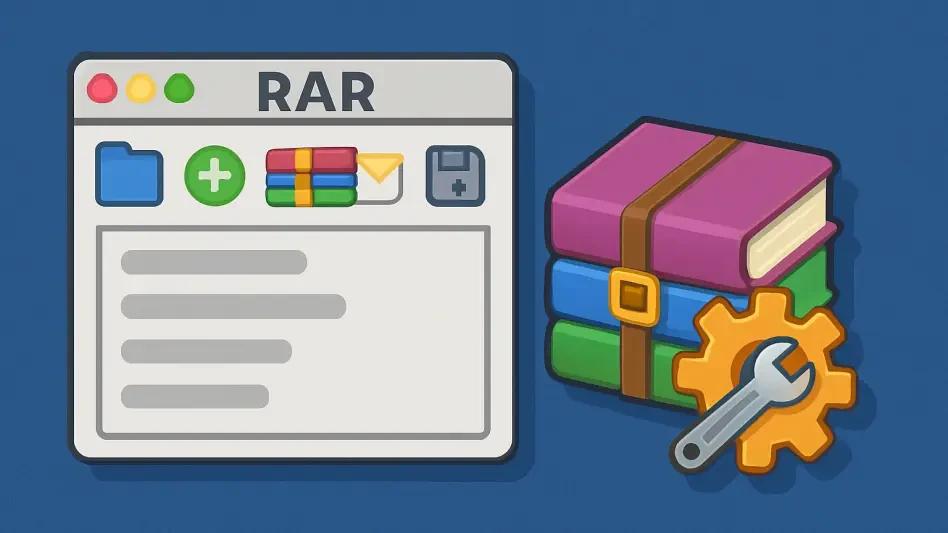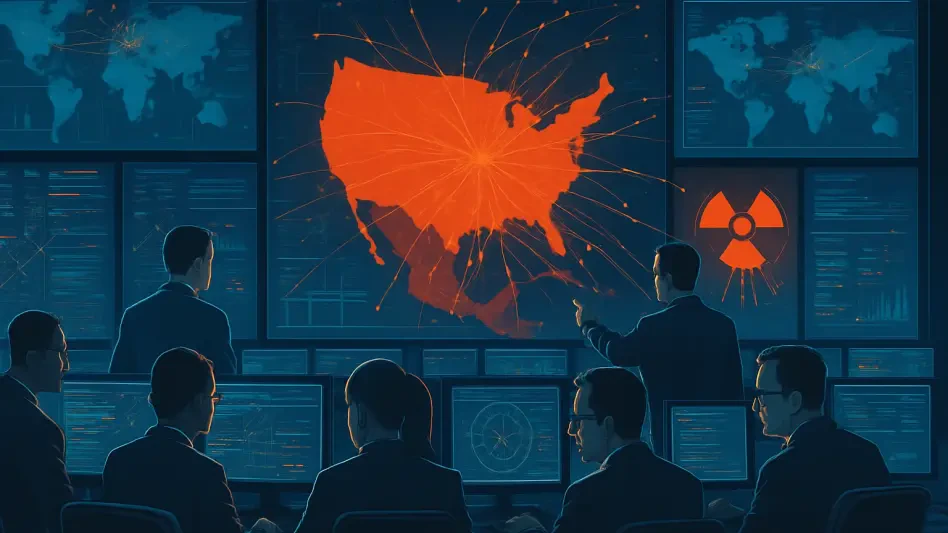In a digital landscape where cyber threats evolve at an alarming pace, a recently uncovered path traversal vulnerability in WinRAR, identified as CVE-2025-8088, has emerged as a critical risk for millions of Windows systems worldwide, demanding immediate attention. This flaw allows malicious actors to craft deceptive archives that bypass the user’s designated extraction path, placing harmful files into unauthorized locations within the system. With all versions of WinRAR up to 7.12 affected, the scope of this issue extends beyond a mere software glitch—it poses a significant enterprise-level threat. Furthermore, its inclusion in the CISA Known Exploited Vulnerabilities (KEV) Catalog signals that exploitation is already underway in real-world scenarios. The urgency to address this zero-day vulnerability cannot be overstated, as it impacts a wide range of users and organizations. Swift action and robust tools are essential to mitigate the risks and protect sensitive systems from potential compromise by determined attackers.
1. Understanding the WinRAR Vulnerability and Its Impact
A deeper look into CVE-2025-8088 reveals the severity of the threat posed by this path traversal flaw in WinRAR. Attackers can exploit this vulnerability to manipulate file extraction processes, directing malicious content to critical system areas without user consent or awareness. Such actions could lead to unauthorized access, data theft, or even system-wide compromise. Since the flaw affects every version up to 7.12, countless systems remain exposed until updates or other protective measures are implemented. The listing in the CISA KEV Catalog further emphasizes the immediate danger, as it confirms active exploitation by threat actors. Organizations must recognize that this is not a theoretical risk but a pressing issue requiring urgent attention. The widespread use of WinRAR in both personal and professional environments amplifies the potential fallout, making it imperative to prioritize security strategies that address this vulnerability comprehensively and without delay.
The implications of this WinRAR flaw extend across industries, affecting businesses of all sizes and sectors. Reports indicate that threat actors are already leveraging the vulnerability to deploy malware and gain unauthorized access to systems. This situation underscores the importance of having robust cybersecurity frameworks in place to detect and respond to such threats. The fact that exploitation is ongoing means that delays in addressing the issue could result in significant financial and reputational damage. Security teams must act decisively to assess their exposure and implement protective measures. Beyond immediate fixes, this incident highlights the broader challenge of managing software vulnerabilities in a rapidly evolving threat landscape. Staying ahead of attackers requires not just reactive solutions but also proactive planning to anticipate and neutralize risks before they can be exploited on a larger scale.
2. Active Exploitation by Threat Actors
The rapid exploitation of CVE-2025-8088 by various threat groups illustrates the global reach and severity of this zero-day flaw. Notably, RomCom, also known as Storm-0978 or Tropical Scorpius, has been using the vulnerability to distribute malware across diverse industries, including finance, manufacturing, defense, and logistics. These attacks demonstrate the versatility of the exploit in targeting critical sectors that rely heavily on secure data handling. Simultaneously, another group, Paper Werewolf, has focused on Russian organizations, proving that the threat is not confined to a single region or demographic. The cross-border nature of these campaigns reveals a stark reality: zero-day vulnerabilities do not discriminate based on geography or industry. This widespread activity serves as a reminder that organizations everywhere must remain vigilant and prepared to counter such sophisticated and coordinated attacks.
Responding to these active threats demands agility and adaptability from security teams. The diverse range of industries targeted by groups like RomCom and Paper Werewolf shows that no sector is immune to the risks posed by this WinRAR flaw. Effective defense strategies must account for the possibility of tailored attacks that exploit specific organizational weaknesses. The speed at which these threat actors operate further complicates the response process, as delays can allow attackers to establish footholds within systems. Organizations need mechanisms that can quickly identify and neutralize threats before they escalate into full-blown breaches. This situation also highlights the importance of international collaboration in cybersecurity, as sharing intelligence on emerging threats can help build a more resilient global defense network. Addressing this challenge requires both immediate action and long-term planning to prevent similar vulnerabilities from being exploited in the future.
3. Comprehensive Defense with a Unified Platform
When zero-day threats like CVE-2025-8088 emerge, the speed of response often determines whether an organization falls victim to an attack or successfully thwarts it. A cutting-edge solution offers multiple avenues for risk reduction, including patching, automated remediation, mitigation, and even complete software removal, all managed through a single, intuitive platform. This centralized approach empowers security teams to act swiftly and decisively without the burden of juggling disparate tools or processes. By integrating various response mechanisms into one system, it becomes easier to tailor strategies to specific organizational needs while maintaining a high level of control. The ability to address vulnerabilities efficiently is crucial in today’s fast-paced threat environment, where every second counts in preventing potential breaches or data loss.
Beyond speed, the value of a unified platform lies in its capacity to provide clarity and confidence during crisis situations. Security teams can access detailed insights and execute actions such as deploying patches or applying temporary safeguards without disrupting business operations. For instance, addressing the WinRAR vulnerability becomes a streamlined process when tools are available to manage updates or restrict access to vulnerable components instantly. This holistic approach not only mitigates immediate risks but also builds a foundation for long-term resilience against future zero-days. By reducing complexity and enhancing visibility, such a platform ensures that IT and security teams can focus on strategic priorities rather than getting bogged down by manual tasks. The result is a more proactive stance that keeps organizations ahead of evolving threats in an increasingly complex digital landscape.
4. Immediate Patching for Quick Risk Elimination
One of the most direct ways to neutralize the risk posed by CVE-2025-8088 is by upgrading to the secure release, WinRAR 7.13, which resolves the path traversal flaw. Advanced security solutions enable teams to create and deploy patch jobs directly from a centralized catalog, ensuring that vulnerable endpoints are updated efficiently at scale. This method eliminates the need for fragmented tools or time-consuming manual processes, allowing for rapid response across large environments. By streamlining the patching process, organizations can significantly reduce their exposure to active exploits without compromising operational stability. The importance of timely updates cannot be overstated, as delays in applying fixes can provide attackers with windows of opportunity to infiltrate systems and cause extensive damage.
Implementing patches promptly is a critical step, but it also requires careful coordination to avoid unintended disruptions. Security platforms that facilitate patch deployment offer the added benefit of minimizing downtime by scheduling updates during off-peak hours or in phases. For the WinRAR vulnerability, this means endpoints can be secured without impacting day-to-day activities, even in complex IT environments. Additionally, having visibility into the patching status across all systems ensures that no device is left vulnerable due to oversight. This level of oversight is essential for maintaining compliance with industry standards and regulatory requirements, which often mandate swift action in response to known vulnerabilities. By prioritizing immediate patching as part of a broader defense strategy, organizations can effectively close the door on potential threats like CVE-2025-8088 before they escalate into serious incidents.
5. Proactive Defense Through Automated Updates
Reactive measures alone are insufficient in the face of rapidly evolving zero-day threats like the WinRAR flaw. Automated patching represents a shift from crisis-driven responses to a more forward-thinking approach to cybersecurity. Modern platforms allow organizations to automatically update not only WinRAR but also other low-risk applications across their environments. These systems provide clear visibility into application families, complete with two years of vulnerability history, helping teams identify which apps are safe to automate. Furthermore, updates can be scheduled daily or twice a week, ensuring that zero-days are addressed promptly without waiting for manual intervention. This proactive model minimizes the risk of exploitation while preserving operational continuity, enabling organizations to stay ahead of potential attackers.
The benefits of automation extend beyond just speed; they also reduce the burden on IT and security teams by eliminating repetitive tasks. For instance, handling the WinRAR vulnerability through automated updates ensures that no system remains exposed due to human error or oversight. Teams can focus on strategic initiatives rather than spending time on routine patch management. Additionally, automation fosters consistency in applying updates across diverse environments, which is particularly valuable for large enterprises with numerous endpoints. By integrating such capabilities into their cybersecurity frameworks, organizations build a stronger defense against future vulnerabilities. This approach not only addresses current threats like CVE-2025-8088 but also prepares systems for emerging risks, creating a more resilient infrastructure overall.
6. Temporary Safeguards to Reduce Exposure
Operational constraints often prevent immediate patching, making interim risk reduction measures a vital component of zero-day defense. Advanced security tools enable teams to apply mitigation controls that instantly lower exposure and adjust the Qualys Detection Score (QDS). For CVE-2025-8088, specific actions include blocking all WinRAR executables and clones, revoking access to associated DLL files, and stopping or disabling running processes and services. These steps create a protective barrier that limits the potential for exploitation while permanent solutions are prepared. Once implemented, the status of these mitigations is clearly reflected in monitoring systems like VMDR, offering transparency and audit-ready documentation. Such capabilities ensure that organizations can maintain security posture even under challenging circumstances.
Mitigation strategies serve as a critical bridge between vulnerability discovery and full remediation, providing breathing room for teams to plan their next moves. For the WinRAR flaw, applying these temporary controls can prevent attackers from exploiting the path traversal issue during the window of exposure. This approach is particularly useful in environments where patching must be tested or delayed due to compatibility concerns. By reducing risk without requiring immediate system changes, mitigation allows businesses to balance security needs with operational demands. Moreover, having visibility into the effectiveness of these measures builds confidence that systems remain protected during the interim period. This layered defense tactic ensures that even if a zero-day like CVE-2025-8088 is actively exploited, the potential impact on the organization is significantly minimized.
7. Decisive Action Through Complete Removal
If WinRAR is not deemed business-critical, uninstalling it entirely may represent the most definitive way to eliminate associated risks. Security platforms provide ready-to-use scripts from extensive libraries to remove vulnerable versions of the software. This includes clean removal from individual user directories in user-space installations and complete uninstallation from Program Files in admin-space setups across endpoints. Such thorough actions ensure that no hidden or non-standard installations linger as undetected vulnerabilities within the environment. Opting for full removal can be a strategic choice for organizations that do not rely on the application, effectively closing off a potential attack vector without the need for ongoing management or updates. This approach offers a permanent solution to the threat posed by CVE-2025-8088.
The process of uninstalling software like WinRAR must be executed with precision to avoid leaving residual risks. Advanced tools simplify this by automating the removal process and verifying that all components are eradicated from the system. For organizations, this means peace of mind knowing that even obscure installations are addressed, preventing attackers from exploiting overlooked instances. Additionally, maintaining an accurate asset inventory post-removal ensures that the software is not inadvertently reintroduced into the environment. This decisive step can be particularly effective in environments with strict security policies or where alternative tools can fulfill the same functions as WinRAR. By eliminating unnecessary software, organizations not only address the current vulnerability but also reduce their overall attack surface, enhancing long-term security resilience.
8. Tailored Response Framework for Zero-Day Defense
Zero-day responses must be customized to an organization’s specific context, particularly regarding the criticality of affected software like WinRAR. A decision flow helps guide this process: First, determine if WinRAR is in use. If not, no action is needed beyond confirming through asset inventory and monitoring that it isn’t reintroduced. If it is used, assess whether it is business-critical. For critical cases, immediate patching to version 7.13 is advised, using centralized tools for deployment. If patching is delayed, apply mitigation by blocking executables, DLLs, and processes. For non-critical cases, complete uninstallation using provided scripts for both user and admin installations is recommended. Centralizing these actions through a unified platform empowers security and IT teams to transition from reactive measures to proactive leadership in managing vulnerabilities like CVE-2025-8088.
This tailored framework ensures that responses align with organizational priorities and constraints, avoiding a one-size-fits-all approach. For instance, businesses reliant on WinRAR for daily operations can prioritize swift patching or temporary safeguards to maintain functionality while securing systems. Conversely, those with no dependency on the software can opt for removal, eliminating the risk entirely. The ability to manage all these options from a single system streamlines decision-making and execution, reducing the likelihood of errors or delays. Such structured guidance is invaluable in high-pressure situations where zero-days are actively exploited. By adopting a decision flow that accounts for both immediate needs and long-term security goals, organizations can navigate complex threats with greater confidence and efficiency, ensuring robust protection against current and future vulnerabilities.
9. Building Resilience with a Multi-Path Strategy
Reflecting on the response to CVE-2025-8088, it became evident that a unified platform consolidating options like patching, automated updates, temporary safeguards, and full removal was instrumental in managing the crisis. This integrated approach allowed teams to select the most suitable path for their environment, accelerating risk reduction while maintaining oversight. In a landscape where zero-days demanded both speed and precision, having multiple defense strategies accessible through one system proved to be a game-changer. It shifted the dynamic from merely reacting to threats to taking a commanding role in cybersecurity preparedness.
Looking ahead, organizations were encouraged to explore why leading entities trusted such comprehensive solutions for zero-day defense. The next steps involved evaluating current systems to identify gaps in vulnerability management and adopting platforms that offered similar multi-path capabilities. By doing so, businesses could build resilience against future threats, ensuring they were not caught off guard by evolving risks. This proactive mindset, supported by robust tools, positioned them to handle emerging challenges with agility and assurance.








